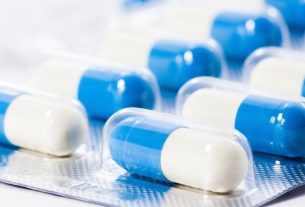The lymphatic system is a set of organs, tissues, vessels and channels that are distributed throughout the body to help filter and remove excess fluids and impurities from the body.
Furthermore, the lymphatic system also contributes to the formation of the body’s defense cells, such as lymphocytes, which are responsible for defending and fighting microorganisms that can cause diseases.
Avoiding contact with chemicals such as pesticides or cleaning products, drinking plenty of water, and maintaining a healthy lifestyle, with a balanced diet and regular physical activity, are important measures that help keep the lymphatic system healthy and prevent diseases. .

Main functions of the lymphatic system
The main functions of the lymphatic system are:
- Collect and filter excess fluid from the body, through lymph, and then transfer it to the blood;
- Absorb fat from the intestine and transport it to the blood, contributing to the production of lymphocytes and the development of immunity;
- Transport and remove waste and “defective” cells from the body.
The lymphatic system is an important part of the immune system, producing and releasing lymphocytes and other defense cells that fight bacteria, viruses, parasites and fungi, helping to prevent various types of diseases, such as cancer, flu and colds.
What is lymphatic drainage for?
Lymphatic drainage is a procedure that consists of performing a massage with your hands, with gentle movements, which aims to stimulate and facilitate the circulation of lymph through your vessels, and reach the bloodstream more quickly.
As the lymphatic system does not pump, like the one done by the heart, this massage can help with the return of lymph, especially in people who have fragility of these vessels and a tendency to retain fluids, helping to reduce swelling on the face or body. . See how lymphatic drainage is done.
Anatomy of the lymphatic system
The main components of the lymphatic system are:
1. Lymph
It is a transparent liquid that is made up of water, nutrients and substances produced by cells, such as hormones and enzymes, and which travels through the lymphatic circulation.
Function: Lymph helps drain excess water and waste from the body, as well as transporting white blood cells throughout the body, helping to fight infections.
2. Lymphatic vessels
Capillaries are small, thin lymphatic vessels that collect lymph, and as they travel along the path to take lymph to the heart, they increase in size and form lymphatic vessels.
Function: capillaries and lymphatic vessels collect and carry lymph to be filtered in the lymph nodes. At the end of the journey and filtration, the lymphatic vessels release the already filtered lymph into the thoracic ducts, a structure that runs from the abdomen to the neck.
3. Lymphatic ducts
They are large lymphatic channels, known as the left lymphatic duct and right lymphatic duct, where the lymphatic vessels empty the lymph, which has already been filtered. These ducts connect to the heart, where lymph passes before returning to the bloodstream.
Function: The thoracic duct collects and conveys most of the body’s lymph to the blood, helping to maintain normal blood volume and blood pressure, as well as preventing the build-up of fluid, known as edema.
4. Lymphatic organs
The lymphatic organs are organs, distributed along the path of the lymphatic vessels, which are stimulated whenever there is an infection or inflammation. The main lymphatic organs are:
- Bone marrow: is a soft, spongy tissue located inside long bones, such as the hip and sternum, which has the function of producing various blood cells, including red blood cells, white blood cells and platelets;
- Timo: is a gland located in the upper part of the chest, which has the function of developing and multiplying T lymphocytes, bone marrow cells that help fight microorganisms, especially in the first years of life;
- Spleen: it is the largest lymphatic organ, located in the upper left part of the abdomen, above the stomach, and is responsible for producing lymphocytes, in addition to filtering the blood, eliminating microorganisms and aged cells;
- Appendix: The appendix contains lymphoid tissue that helps fight bacteria before they reach the intestine. Furthermore, it is believed that the appendix also stores beneficial bacteria, helping to balance the intestinal flora after an infection.
There are also tonsils, also known as tonsils, which are clusters of lymph nodes, located in the mouth, in addition to Peyer’s patches, which are located in the intestine, and which are also responsible for producing immune system cells and helping to protect against microorganisms. .
5. Lymph nodes
Lymph nodes are small glands found in regions such as the armpit, groin and neck that are responsible for filtering the lymph, removing bacteria, viruses and cancer cells, in addition to producing and storing lymphocytes and other cells of the immune system that fight microorganisms present in the lymph.
Main diseases of the lymphatic system
Some situations can cause changes in the functioning of the lymphatic system, resulting in diseases, such as:
1. Filariasis
Filariasis, also known as elephantiasis, is one of the main diseases of the lymphatic system, caused by the parasite Wuchereria bancroftiwhich is transmitted to people through the bite of mosquitoes of the genus Culex sp.
In this disease, the parasite reaches the lymphatic vessels and blocks the flow of lymph, causing swelling of the organ whose circulation has been obstructed. Know the symptoms and learn how to treat filariasis.
2. Cancer
Some types of cancer can occur in the vessels and organs of lymphatic circulation, such as lymphoma, a type of cancer where the multiplication of lymphocytes is increased, compromising lymphatic circulation and resulting in tumor formation, which can lead to symptoms such as malaise, itching and weight loss. Learn about other symptoms and the main causes of lymphoma.
In addition, some types of cancer can also block lymphatic channels, disrupting lymph circulation.
3. Allergies
Allergies are the body’s reactions against substances such as dust, pollen and cigarette smoke, which can cause conditions such as allergic rhinitis, asthma, conjunctivitis and dermatitis.
Allergies happen when the body increases the production of defense cells to try to fight the substances, leading to inflammation and symptoms such as sneezing, runny nose, blocked nose or difficulty breathing.
4. Enlarged lymph nodes
The lymph nodes are enlarged due to infections such as pharyngitis, mononucleosis or HIV infection, or they may be enlarged due to an infection or cancer.
Lymphadenitis is an inflammation caused by microorganisms in the lymph nodes or glands, which become enlarged and soft.
5. Malformation of the lymphatic system
Malformations of the lymphatic system can also cause changes in lymph circulation, which may occur due to changes in vessels or lymph nodes. By impairing the circulation of lymph to the bloodstream, these situations can cause lymphedema, which is swelling caused by the accumulation of lymph and fluid in the body.
6. Injuries to organs of the lymphatic system
Injuries to organs of the lymphatic system, such as bone marrow, spleen and lymph nodes, caused by blows or as a result of drug treatments, can also alter lymphatic circulation.
Women who undergo breast cancer treatment with radiotherapy or removal of lymph nodes in the armpit region, for example, may experience changes in their lymph drainage capacity.
When to go to the doctor
It is important to seek medical advice when experiencing extreme tiredness or signs such as swelling for a long time, with no apparent cause or that interferes with daily activities, weight loss and fever.

Sign up for our newsletter and stay up to date with exclusive news
that can transform your routine!
Warning: Undefined array key "title" in /home/storelat/public_html/wp-content/plugins/link-whisper-premium/templates/frontend/related-posts.php on line 12
Warning: Undefined array key "title_tag" in /home/storelat/public_html/wp-content/plugins/link-whisper-premium/templates/frontend/related-posts.php on line 13



